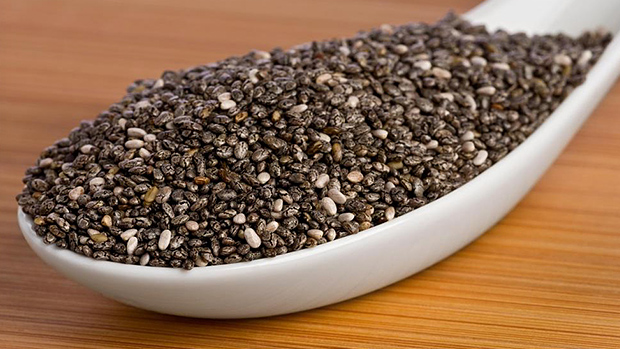Muscle. We spend countless hours pushing iron to pack more of it on our bodies. We center our diets around fueling and feeding it. And we're constantly looking for ways to make better and faster gains.
For most of us, lifting weights is not just a hobby or simply something we do, it's very much a part of our identity. In fact, we probably spend more time thinking about stimulating muscle growth than most of us would like to admit, and we're always searching for the latest hypertrophy news.
If that's you, I have some information that will more than light up your brain's synapses. Some of it's a little geeky and technical, but it's also very important and provides a clearer, more focused picture of what's involved in gaining muscle.
Here's what you need to know...
- Weight training produces muscle growth by activating mTOR, which is the master enzyme responsible for muscle cell protein synthesis resulting in hypertrophy.
- Muscle cells produce phosphatidic acid (PA), during eccentric contractions, to activate mTOR.
- Subjects taking a PA supplement achieved 50% greater increase in muscle cross-sectional area and lean body mass, 40% greater increase in total strength (upper and lower body), and 60% greater loss in body fat than the training-only group (Wilson et al 2014, in press).
- Another study, involving resistance trained men undergoing an 8-week exercise program, showed subjects taking 750 mg of PA per day gained significantly more lean body mass and strength than the training-only group (Hoffman et al. 2013).
- Micro-PA contains a highly specialized form of phosphatidic acid (PA) that powerfully activates and amplifies muscle protein synthesis.

While performing a set of reps under load, your body begins converting mechanical information into biochemical action. The term for this is mechanotransduction, and it's the basis for the most powerful stimulus of intracellular protein synthesis (aka hypertrophy).
Here's exactly how that works. During eccentric movement, an enzyme is dislodged from the Z-lines of muscle cells that hydrolyzes phosphatidylcholine into phosphatidic acid (PA). PA in turn binds to and activates a kinase enzyme, called mTOR, which is the "master regulator" of muscle cell protein synthesis and muscle size.
PA-activated mTOR directly affects immediate and long-term changes in muscle growth. Simply put, if you want to gain muscle, you have to activate mTOR. And the more PA available to activate mTOR, the greater the effect on intracellular protein synthesis and the greater the muscle mass gains.
- Many studies have demonstrated that PA activates and amplifies the "master regulatory enzyme" responsible for immediate and long term changes in muscle growth (aka protein synthesis).
- PA bathed in-vitro with myoblast (baby muscle cells) resulted in an 8-fold increase activation of mTOR.
- PA increases protein synthesis directly by entering the muscle cell and binding to mTOR.
- PA increases protein synthesis indirectly by converting to lyso-phosphatidic acid and attaching to the muscle cell membrane, which increases intracellular PA, and in turn activates mTOR.
- Bioavailability of PA significantly rises in 30 minutes and stays elevated for 7 hours.
- A study, involving resistance trained men undergoing a very intense exercise program, showed subjects supplementing with 750 mg PA per day achieved:
50% greater increase in muscle cross-sectional area and lean body mass.
40% greater increase in total strength (upper and lower body)
60% greater loss in body fat than the training-only group (Wilson et al 2014, in press).
- Another study, involving resistance trained men undergoing an 8-week exercise program, showed subjects taking 750 mg of PA per day gained significantly more lean body mass and strength than the training-only group (Hoffman et al. 2013):
We're currently working with Christian Thibaudeau, IFBB pros Mark Dugdale and Amit Sapir, as well as a handful of other top athletes, testing and refining training techniques to reap the most benefits from Micro-PA.™ You can imagine how difficult it is to add muscle to those already at the top of their game, but results are very impressive. Everything we're doing is being posted and discussed in the Micro-PA Logs & Users Forum . So, if you're Micro-PA user, or if just you're interested in seeing what the pros are saying and doing, check it out.
As a serious lifter, you already train hard. Now it's time to ramp up the results of your efforts. Micro-PA™ does more than simply give you the edge in the gym. It directly activates and amplifies hypertrophy. This is not a hobby. And Micro-PA™ is not for those who treat it like one.
| Schedule | Supplement | Dosing Instructions |
|---|---|---|
| 01:00 Pre-Workout | Micro-PA™ | 6 capsules |
| 00:30 Pre-Workout | Indigo-3G® | 6 capsules |
| 00:15 Pre-Workout | Plazma™ | 500 ml dose |
| Workout | Plazma™ | 3 or 4 doses (500 ml each). Consume in half-dose pulses, spread evenly over the duration of the workout. |
| 00:00 – 01:00 Post-Workout |
Mag-10® | 2 doses (500 ml each). Consume both doses within one hour post-workout. |

- Gundermann DM et al. Soy-derived Phosphatidic Acid, Lysophosphatidic Acid and Phosphatidylserine are Sufficient to Induce an Increase in mTOR Signaling. J Int Soc Sports Nutr. 2013;10(Suppl 1):P7. PMC.
- Hoffman JR et al. Efficacy of phosphatidic acid ingestion on lean body mass, muscle thickness and strength gains in resistance-trained men. J Int Soc Sports Nutr. 2012 Oct 5;9(1):47. PubMed.
- Joy JM et al. Phosphatidic Acid Supplementation Increases Skeletal Muscle Hypertrophy and Strength. J Int Soc Sports Nutr. 2013;10(Suppl 1):P13.
- Joy JM et al. The Effects of 8 Weeks of Phosphatidic Acid Supplementation on Cardiovascular, Kidney, and Liver Safety in Health Young Males. Poster presented at the 2013 annual ISSN conference.
- Purpura M et al. Effect of Oral Administration of Soy-Derived Phosphatidic Acid on Concentrations of Phosphatidic Acid and lyso-Phosphatidic Acid Molecular Species In Human Plasma. J Int Soc Sports Nutr. 2013;10(Suppl 1):P22. PMC.
- Adegoke OAJ et al. mTORC1 and the regulation of skeletal muscle anabolism and mass. Appl Physiol Nutr Metab. 2012 Jun;37(3):395-406. PubMed.
- Donati C et al. New insights into the role of sphingosine 1-phosphate and lysophosphatidic acid in the regulation of skeletal muscle cell biology. Biochim Biophys Acta. 2013 Jan;1831(1):176-84. PubMed.
- Foster DA et al. Phosphatidic acid and lipid-sensing by mTOR. Trends Endocrinol Metab. 2013 Jun;24(6):272-8. PubMed.
- Harrington LS et al. Restraining PI3K: mTOR signaling goes back to the membrane. Trends Biochem Sci. 2005 Jan;30(1):35-42. PubMed.
- Hornberger TA et al. The role of phospholipase D and phosphatidic acid in the mechanical activation of mTOR signaling in skeletal muscle. Proc Natl Acad Sci U S A. 2006 Mar 21;103(12):4741-6. PubMed.
- Hornberger TA et al. Regulation of mTOR by mechanically induced signaling events in skeletal muscle. Cell Cycle. 2006 Jul;5(13):1391-6. PubMed.
- Hulmi JJ et al. Resistance exercise with whey protein ingestion affects mTOR signaling pathway and myostatin in men. J Appl Physiol (1985)
. 2009 May;106(5):1720-9. PubMed. - Laplante M et al. An emerging Role of mTOR in Lipid Biosynthesis. Curr Biol. 2009 Dec 1;19(22):R1046–R1052. PMC.
- Lehman N et al. Phospholipase D2-derived phosphatidic acid binds to and activates ribosomal p70 S6 kinase independently of mTOR. FASEB J. 2007 Apr;21(4):1075-87. PubMed.
- O’Neil TK et al. The role of phosphoinositide 3-kinase and phosphatidic acid in the regulation of mammalian target of rapamycin following eccentric contractions. J Physiol. 2009 Jul 15;587(Pt 14):3691-701. PubMed.
- Rasmussen BB. Phosphatidic acid: a novel mechanical mechanism for how resistance exercise activates mTORC1 signaling. J Physiol. 2009 Jul 15;587(Pt 14):3415–3416. PMC.
- Sengupta S et al. Regulation of the mTOR complex 1 pathway by nutrients, growth factors, and stress. Mol Cell. 2010 Oct 22;40(2):310–322. PMC.
- Stipp D. A New Path To Longevity. Sci Am. 2012 Jan;306(1):32-9. PubMed.
- Veverka V et al. Structural characterization of the interaction of mTOR with phosphatidic acid and a novel class of inhibitor: Compelling evidence for a central role of the FRB domain in small molecule-mediated regulation of mTOR. Oncogene. 2008 Jan 24;27(5):585-95. PubMed.
- Vissing K et al. Differentiated mTOR but not AMPK signaling after strength vs endurance exercise in training-accustomed individuals. Scand J Med Sci Sports. 2013 Jun;23(3):355-66. PubMed.
- Walker DK et al. Exercise, amino acids, and aging in the control of human muscle protein synthesis. Med Sci Sports Exerc. 2011 Dec;43(12):2249-58. PubMed.
- Winter JN et al. Phosphatidic acid mediates activation of mTORC1 through the ERK signaling pathway. Am J Physiol Cell Physiol. 2010 Aug;299(2):C335-44. PubMed.
- Xu Y et al. Activation of mTOR signaling by novel fluoromethylene phosphonate analogues of phosphatidic acid. Bioorg Med Chem Lett. 2004 Mar 22;14(6):1461-4. PubMed.
- Yamada AK et al. Mechanotransduction pathways in skeletal muscle hypertrophy. J Recept Signal Transduct Res. 2012 Feb;32(1):42-4. PubMed.
- Zanchi NE et al. Mechanical stimuli of skeletal muscle: Implications on mTOR/p70s6k and protein synthesis. Eur J Appl Physiol. 2008 Feb;102(3):253-63. PubMed.
- Zhang C et al. Glycerolipid signals alter mTOR complex 2 (mTORC2) to diminish insulin signaling. PNAS. 2012 Jan 17;109(5):1667-1672.





